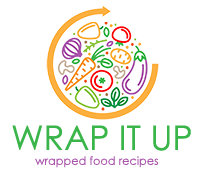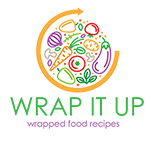Things Every Home Cook needs
I feel that one’s brain and hands are the most important tools required to succeed at anything, and cooking is no different. Certainly, this is true with medicine, music, and goldsmithing; all three of which I have apprenticed in and achieved some measure of success. In modern times, unfortunately, we tend to rely on machines and tests rather than the brain and hands that God has given us all.
Early in my life I studied martial arts. I was always amazed at those who came to the Dojo asking when they would receive their black belt. It required years of hard work and dedication. I don’t think being a good home cook requires this level of dedication necessarily, but the principle applies. A good home cook must also put in hours of practice. There are no shortcuts.
As our brains and hands apply to cooking, the first step is learning through reading, watching, trying, and applying. Learning from one’s mistakes is a critical part of this process, so one must be willing to fail. I have had some monumental failures, and still continue to fail. But failure leads to learning which leads to new opportunities and skills and success.
If the brain and hands are involved and working, good tools and utensils can make the job easier. Hand skills—using knives and other tools—come with careful practice. Good quality knives, for example, are not necessary to become a good home cook, but they sure help. This doesn’t mean you can’t cook with cheaper and less quality utensils, but good quality goes a long way. And once you’ve put practice and time into learning the art and science of cooking, you will appreciate the quality.
There are lots of utensils available, most of which you don’t need. I am always amazed at the interesting new tools available that supposedly reduce time in the kitchen. Seems to me they just reduce your drawer and storage space and creat more kitchen clutter. Handling ingredients, touching them, smelling them and tasting them is critical to process of learning to cook. For example chopping garlic; I find fun, perhaps some do not, but all you need is a sharp knife and hand skills. Chop it, smell it, feel it, and taste that wonderful chopped clove. All of this should be in your memory, and when there is a need for garlic, you know what you are adding. A garlic mincer or chopper, misses this step. Further, by the time you get it out of the drawer, figure out how to use the thing, you can have your garlic chopped and in the dish. I think the principles just discussed apply to all kinds of kitchen gadgets that are probably not necessary for most of us.
The following are some utensils that you should consider investing in obtaining.
KNIVES
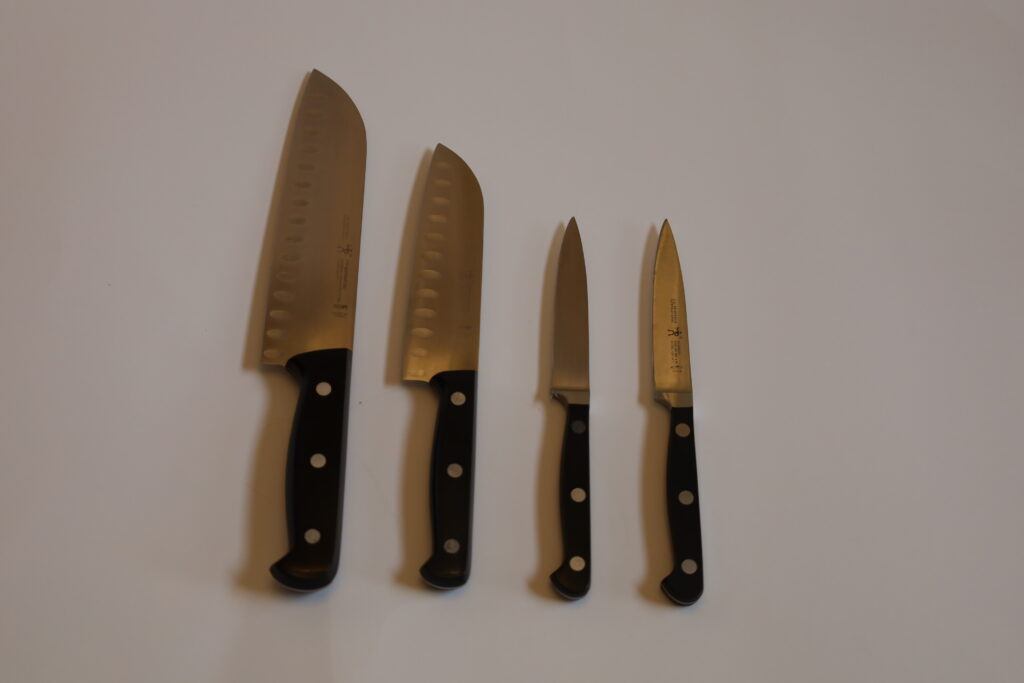
As I mentioned above, quality knives are probably one of the most important tools you need in the kitchen. You don’t need dozens, just a few that will help you cook. I suggest, 2 paring knives, a large chefs knife (6 or 8-inch), and smaller utility knife. Task-specific knives, such as bread knives, can be your next purchase. As you hone your cooking skills you will see the need for other specialty knives such as a fish filet knife or boning knife. If you cook many dishes at once you may need to increase you selection of basic knives, adding more paring knives for example. However, to start you only need these few.
All knives need to be kept clean and sharpened. Do not place them in the dishwasher, and do not submerge them in water for any periods of time. I use the NIUXX Bamboo In-Drawer Knife Block Set which works wonderfully. It keeps the knives seperated, clean and dry. Once you wash them, dry them and put them back in the drawer, don’t let them sit wet on the counter, or airdry.
Sharpening your knives once a year is good practice. If you have the resources a good cutler (knife sharpener) can put a nice sharp and clean edge on your knives yearly. However, home sharpeners also do a good job. I use the ChefChoice which has both sharpening and burnishing slots. There are a number of styles from this company and some tend to be a bit expensive, however they are well worth the cost to keep your knives sharp. They are rated high by Cooks Illustrated as well.
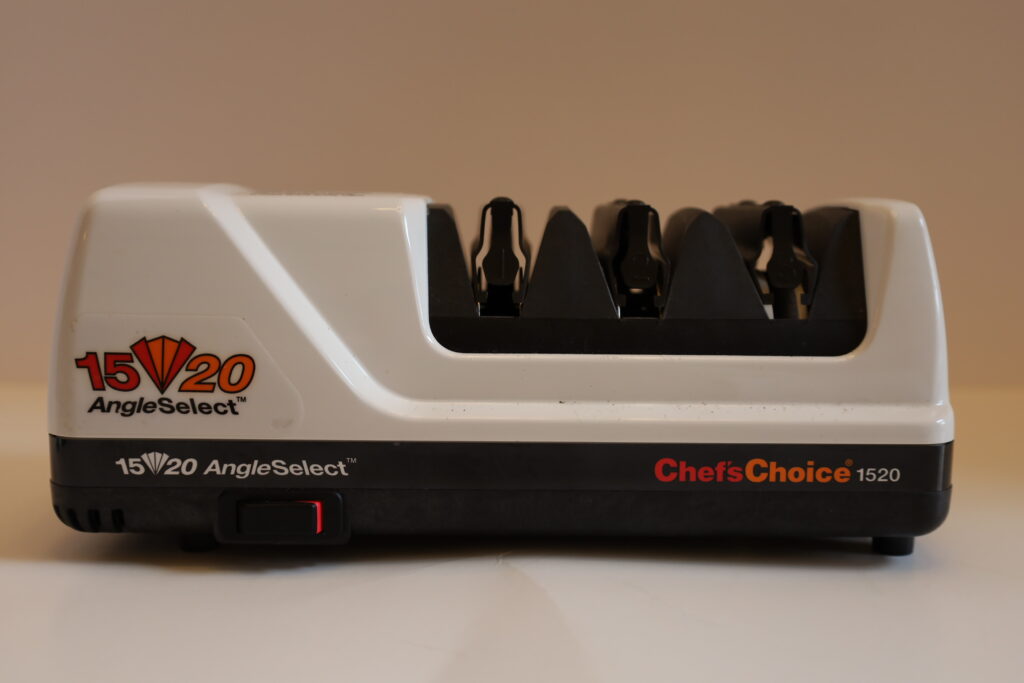
You should always burnish your knives before using them. Using a “steel” is the conventional way to burnish. This process does not sharpen the knife. As you use a knife the fine edge will curl over. You will not see this with the naked eye, but rather with microscopic observation. Using a steel will burnish and therefore straighten this curled edge, taking the edge back to when it was sharpened. The more you use the steel the longer the blade will keep it’s edge. Every time a knife is sharpened a bit of metal is removed. Too much sharpening can ruin a knife, therefore you want to use the sharpener as little as possible, but still keep the knife as sharp as possible, which is where the the burnisher can help. Do not use the knife on a counter or plate, but always on a cutting board.
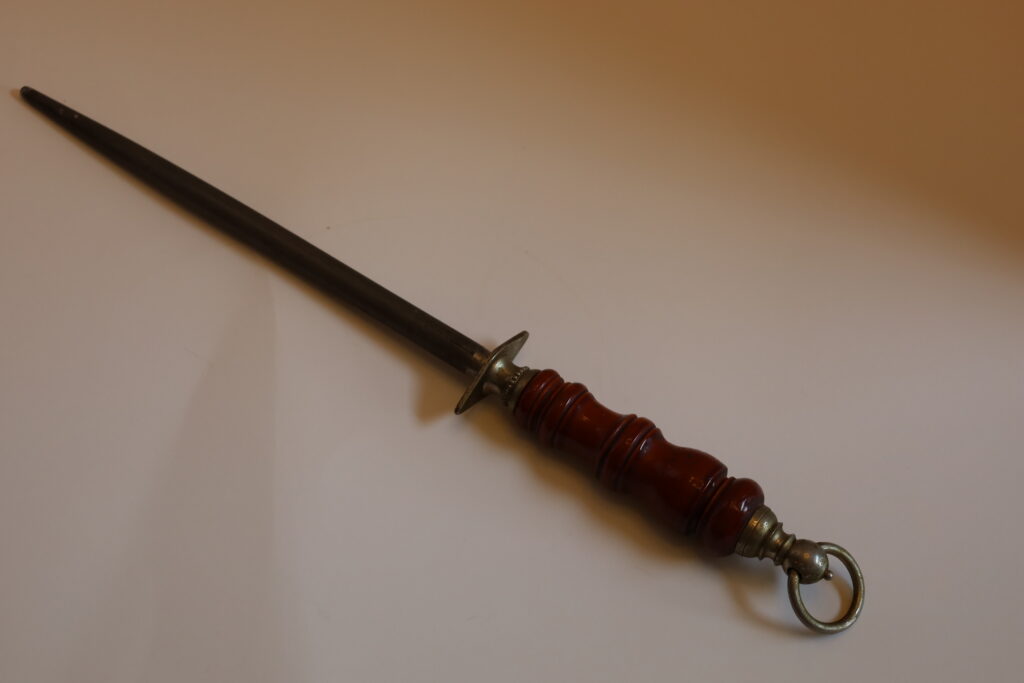
Scissors are another convenient and easy-to-come-by cutting tool. A pair of kitchen shears can be helpful in cutting up chicken and other things, and a plain pair of scissors can be used in all kinds of settings.
POTS AND PANS
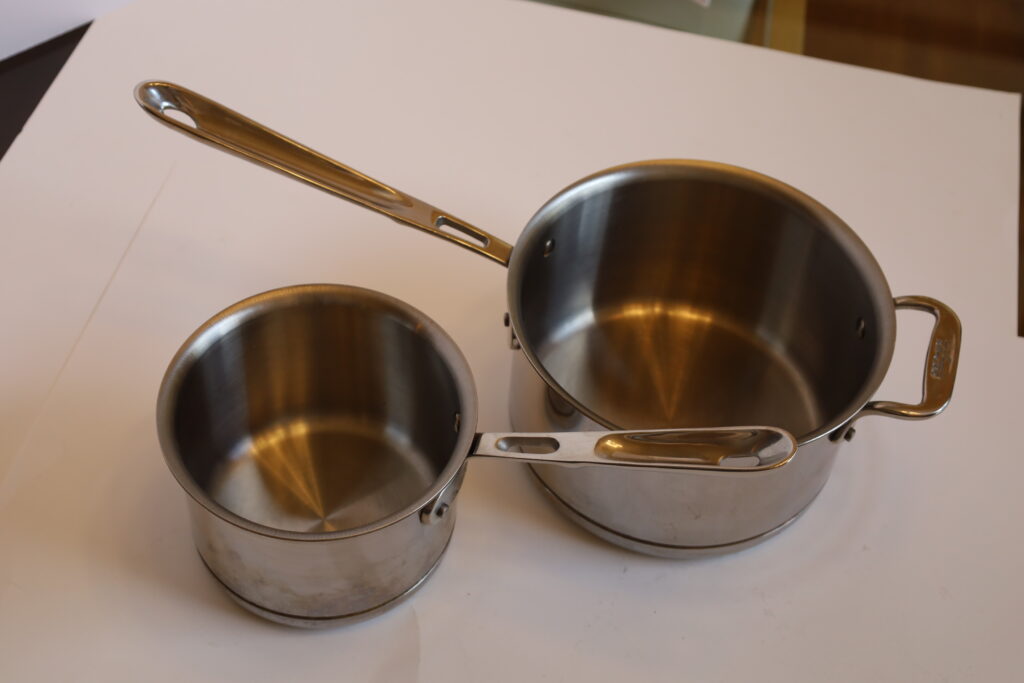
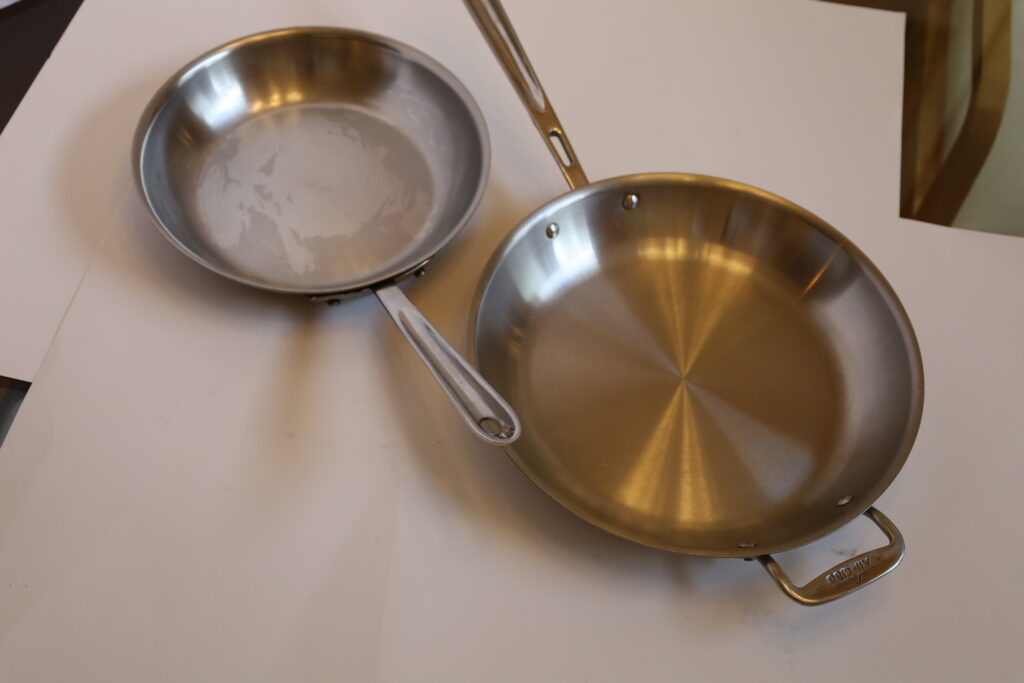
I have been slowly buying All-Clad 5-ply pots and pans and now have a nice set at home. These pans are expensive but the difference in cooking with these and my old pans is beyond measure. They have no hot spots when cooking, heat quickly, maintain heat evenly, and clean up well. I suggest one medium and one small saute pan, one 2-quart and one 4-quart sauce pan, and one large stock pot. For saute pans, a small 9.5-inch and a 12-inch will give you a start. Others can be added as you progress. It is important to keep your All-Clad pans and pot clean, the bottoms as well. All-Clad offers a cleaner that gets them back to their original shine, well almost.
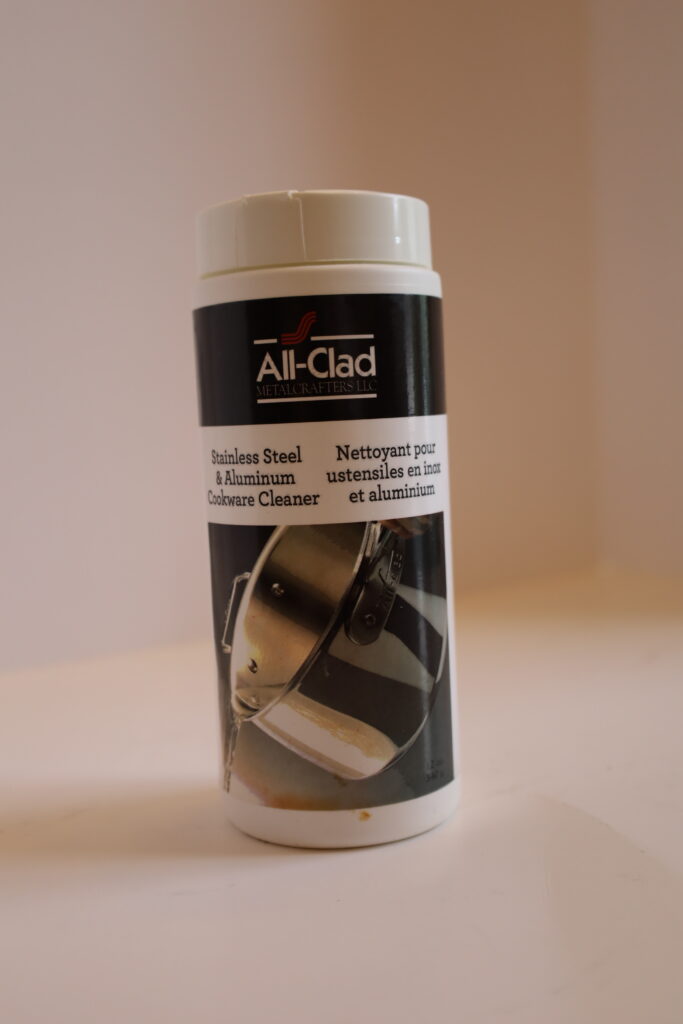
Another option is to buy a carbon steel pan (I use the Matfer Bourgeat Black Carbon Steel Fry Pan, 9.5-inch). They are cheaper than the 5-ply pans and work very well. However, they require seasoning, and in my experience, continued seasoning and care over time. They will be nonstick, if care is used when frying with them and in cleaning them.

Make a list of the equipment you need, and the equipment you want. Buy the highest quality you can afford but plan ahead and upgrade as your situation allows.
Dutch Oven
A Dutch Over is a wonderful kitchen tool that can be used for all kinds of dishes. Soups, stems, sauteing, braising and other types of cooking are made so much easier with a good Dutch Oven. In the 17th century the Dutch began creating cast cooking pots originally in brass. The English took the techniques and in 1707 a casting approach was patented in England called the “Dutch Oven”. In 1896 in Tennessee Joseph Lodge created a cast iron Dutch oven through his company that still produces cast iron cooking pots and pans, Lodge Cast Iron. In 1926 the enameled Dutch Oven was first produced in the United States.
Today there are a number of good quality enameled cast iron Dutch Ovens available. I prefer Staub. The Staub lids have self-basting spikes that do work and the knobs will survive high temperatures. La Creuset produces well made Dutch ovens but without the self-basting spikes. Also you can get high temperature knobs for the lids, but at an added price. Lodge also makes excellent products at a much cheaper price. As far as outcome, in my opinion, Staub, Lodge and La Creuset all will give you a good product that yields excellent dishes for your family table.
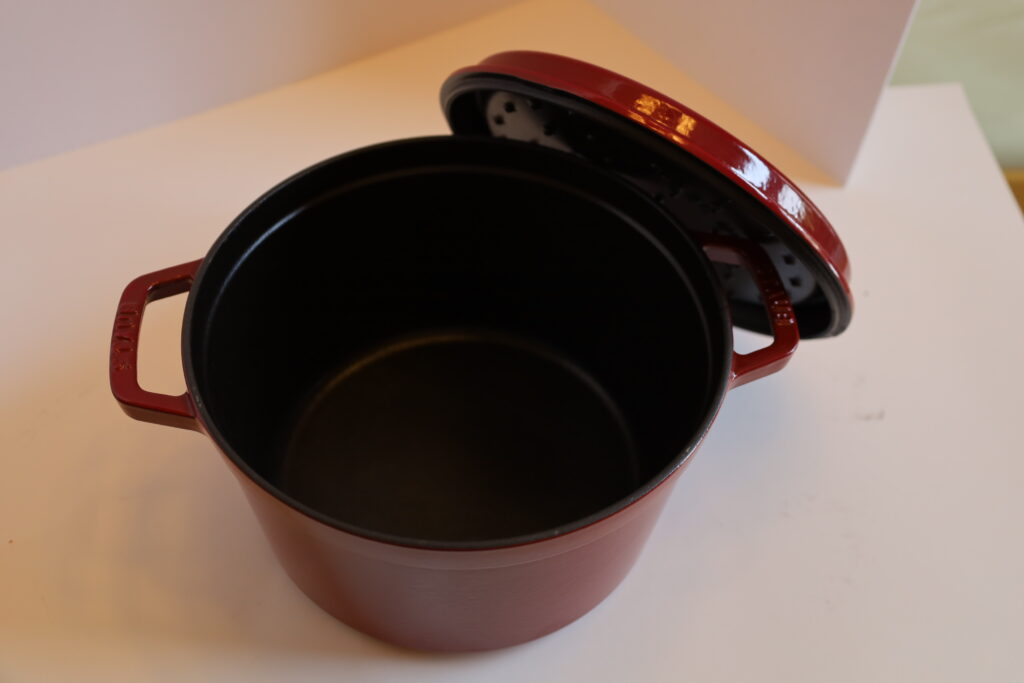
The size of the Dutch Oven depends on family size and what you usually would cook in that oven. If you are single or there are two of you, a smaller size if probably the best, 4 quarts. Staub makes excellent Dutch overs and I have been very happy with my 4 quart oven. For larger families and gatherings a 7 quart will probably be big enough. Dutch Ovens go up to 13 quarts, and have different shapes. However, the round sits better on the burner and will allow for even heating from that burner.
OTHER UTENSILS
Other utensils I use all the time include vegetable peelers, wooden spoons, slotted spoons, and whisks. I use whisks for all kinds of things and have about 4 different sizes (see the picture). The very large whisk I have is used only for beating the egg whites for souffles. Except for the large one, these are fairly cheap so I suggest at least two sizes for your kitchen. The smaller size works great for smaller volumes.
Another item I use all the time are tongs. I have six pairs: four are 9-inch; one is about 12-inches and another is 14-inches. I suggest you purchase a few of these. They work well when boiling pasta, turning pieces of browning meat or chicken and in many other settings.
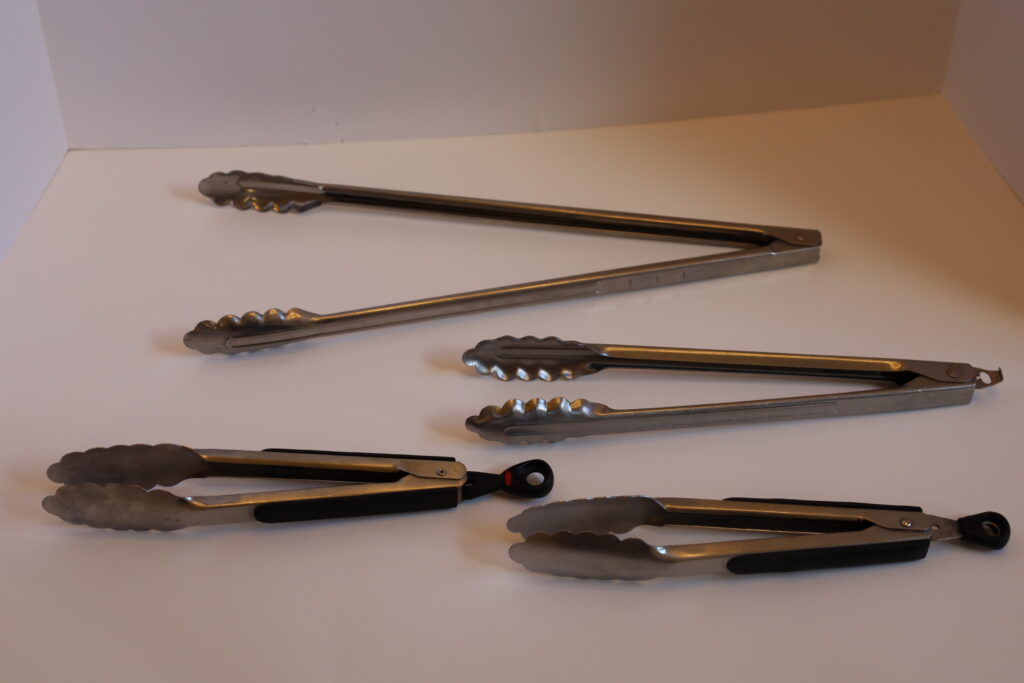
Towels
Kitchen towels are critical in my opinion. I go through two to four with every episode of cooking I do. They should be natural fiber, cotton is the best. They can be sources of bacteria though, even within 24 hours, so use them and wash them. They will mold if you throw them in a pile, so lay them on the edge of the hamper until dry and then wash them. Wash them separate from bath towels or other clothing as they can give an odd odor and use bleach.
Aprons
Aprons are another important addition for the home cook. I use the Hudson Durable Goods aprons, ( I added link to site) which wrap around and have a plastic snap. They are good quality, made of thick and durable material, and can be washed. I wash these with my towels.
All of these items will take you a long way on your journey as a home cook.
Buon appetito and wrap it up!
